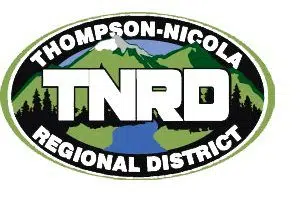
Following the detection of an invasive pest near Exhibition Park, the City of Kamloops is preparing for the formal establishment of a federally regulated quarantine zone to limit the spread of the Japanese beetle (Popillia japonica). This comes after 11 beetles were found in the area during routine surveillance in 2024 by the Canadian Food Inspection Agency (CFIA).
Environmental Services Supervisor Danielle Sparks briefed City Council this week, outlining the extent of the threat and detailing the City’s response and preparation. “If left unmanaged, this pest can cause significant damage to parks, golf courses, gardens, and agricultural crops,” she said.
A Hitchhiking Threat
Known for their iridescent green bodies and white tufted hairs on their abdomen, Japanese beetles are aggressive skeletonizers that feed on over 300 plant species. Their larval grubs consume plant roots, causing further damage to turf and crops.
“Adult beetles do not fly very far, so they rely on human activities to be able to spread,” Sparks explained. “Just shaking out your gear, your equipment, looking at your shoes and clothes to see if there are any hitchhikers — that can help stop the spread.”
CFIA to Finalize Regulated Area June 13
The CFIA will finalize the boundaries of a regulated area around Exhibition Park on Friday, June 13, bringing Kamloops in line with other B.C. cities already managing infestations. Similar zones have existed in Vancouver, Burnaby, and Port Coquitlam since 2018.
Regulated articles — including turfgrass, potted plants with soil, sod, and certain organic materials — cannot be moved out of the zone without a movement certificate issued by the CFIA.
“A movement certificate is not required for the movement of regulated articles into or within a regulated area,” Sparks told Council. “But it will be required year-round for movement out of the area — and this applies to everyone: residents, businesses, landscapers, developers.”
The City of Kamloops has secured multi-use movement certificates to continue essential operations like park maintenance and organic waste collection. All material transport will be logged to ensure compliance with federal guidelines.
Impact on Residents and City Operations
Residents within the regulated area — which includes neighbourhoods surrounding Exhibition Park, Charles Anderson Stadium, and the Kamloops Rugby Club — will not need to separate their yard and organic waste at this time. “Through our curbside organics program, it is already accepted that those regulated articles are within that stream,” said Sparks. “So we have to treat all of that material accordingly.”
However, for large volumes of plant material with soil — such as from landscaping or gardening — residents will need to apply directly to the CFIA for a movement certificate.
A city-wide communications campaign is underway. “We will be mailing letters to every property within the regulated area,” Sparks confirmed. “We’ve also developed a comprehensive internal and public communications plan, including outreach with the Invasive Species Council of BC at farmers markets and community events.”
Targeted Treatments and Ongoing Surveillance
In late May, the City completed larvicide treatments using Acelepryn over 5.5 hectares of public lands in and around Exhibition Park. The same treatment was offered, at no cost, to private landowners in the area.
“It is in the best interest, to be able to eradicate Japanese beetles, that treatment does occur on private residences — but it is optional,” Sparks noted. The treatment targets larvae in the soil before they emerge as adults in summer.
Additional treatment will likely be needed in 2026, and will depend on CFIA surveillance results.
“The CFIA is 100% responsible for monitoring and surveillance of Japanese beetle,” Sparks explained to Council. “They have already increased trapping in our area for this year. To get the regulated area removed, we need two consecutive years of zero beetle detections.”
Operational Adjustments and Budget Planning
City crews are adapting standard operating procedures to ensure machinery doesn’t inadvertently spread beetles between sites.
“We’ve created SOPs that detail cleaning out of equipment,” Sparks said. “We’re training our internal staff to ensure Japanese beetle does not spread. We’re also looking into keeping tools and machinery on-site in the regulated area whenever possible.”
Kamloops City Council previously approved $200,000 in the 2025 operating budget for beetle response. Sparks said that’s expected to be sufficient for this year’s efforts, but a cost update will be presented in Q1 of 2026.
Final Thoughts and What You Can Do
Residents are urged to stay alert and report any sightings of the beetle directly to the CFIA. The City’s website also includes detailed information, a FAQ, and links to CFIA resources: kamloops.ca/japanesebeetle.
“We continue to work with the BC Japanese Beetle Response Group to leverage their expertise and knowledge,” Sparks concluded. “Kamloops is not alone in this — and we are taking this seriously.”
What You Can Do
-
Inspect your shoes, tools, and garden equipment when entering/exiting the area.
-
Don’t move turf, soil, or potted plants out of the regulated area without a movement certificate.
-
Use your green bin as usual, unless you’re disposing of large quantities of soil-related materials.
-
Report sightings of the beetle to the CFIA.
-
Stay informed via kamloops.ca/japanesebeetle.
With collective vigilance and cooperation, Kamloops can work toward eradicating this damaging pest.















